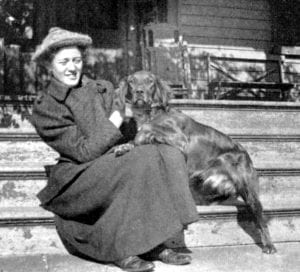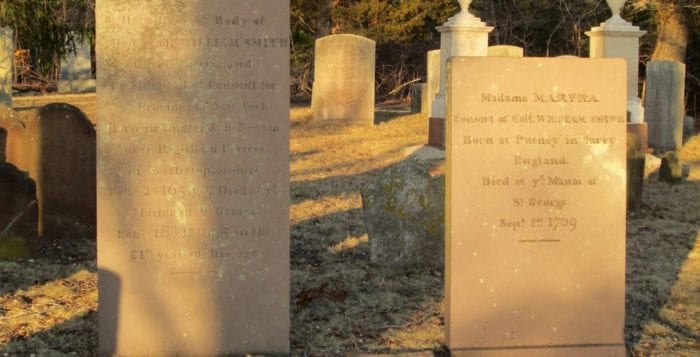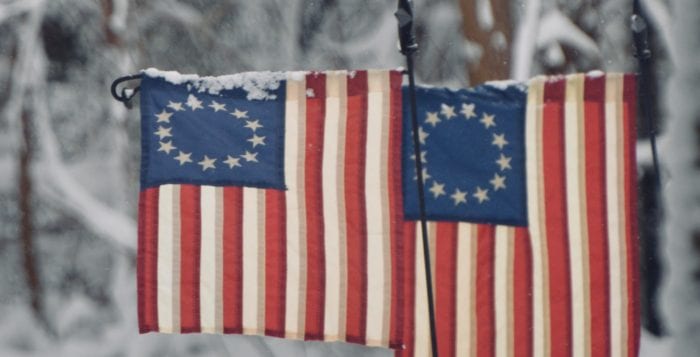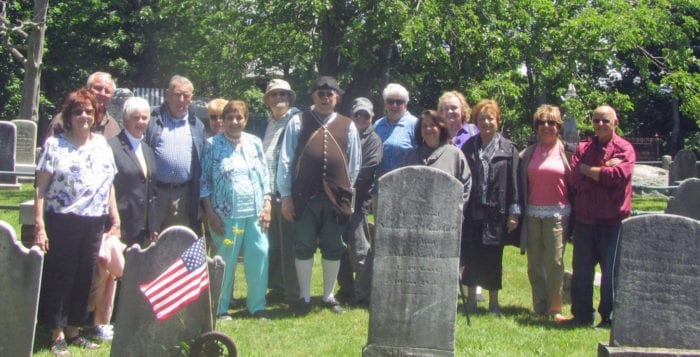By Beverly C. Tyler
Part two of a two-part series
William “Tangier” Smith and his wife Martha who lived in St. George’s Manor in Strong’s Neck became known locally as the lord and lady of the manor in the late 1600s.
As detailed by historian Kate Strong in her Long Island Forum columns, “In 1675 [in Tangier, Morocco], Colonel William Smith … bought a great book, sometimes called ‘The Tangier Book’ and sometimes ‘The First Pigskin Book.’ The first entry was a statement of his marriage. After that he recorded the baptism [including minister and godparents], and some deaths, of his numerous children. As he only wrote on one side of the page, his wife, Martha, turned the book upside down and wrote in her recipes — in some cases telling the name of the person giving her the recipe.”

The recipes and notes Martha Smith made in the pigskin book were most likely all entered during her years on Long Island.
“She sometimes added a few bits of news,” Strong wrote. “As when she told that she felt that Colonel Williams’ sickness came from a strain he had incurred in lifting her off the horse … later she recorded that her dear Billy was better.”
Strong listed just a few of the recipes from the pigskin book, including “To make pancakes — take the yokes of six eggs, add ye one white and one pint of cream and half a pint of sacke & nutmeg and a little salt and some sugar. Make the batter of a reasonable thickness, work in some flower (sic) & fry them. Mrs. Osborn.”
Martha also included recipes for medicinal purposes, including one from her daughter. “For a sore throat or Quinsey — take Rue & pound it pretty fine & make a poultice & plaster, must be an inch thick & lay it on ye side of ye throat. It is a sure cure. You may sprinkle it with brandy. Mrs. Strod.”
“She was not too busy to enjoy riding with her husband,” Strong wrote. “I imagine they had fine horses. I know their saddles were covered with velvet. (Hers a side saddle of course). They went to the South Shore not only to enjoy the ocean breezes in the summer but on business.”
When Martha’s husband died in 1705, the Smith children included Henry, later second lord of the manor, age 26; Mrs. Martha Heathcote, age 23; Jeane, age 17; William Henry, later to inherit the South Shore manor house and estate, age 15; Gloryana, later to marry the Rev. George Muirson, age 14; and Charles Jeffery, who would die of smallpox in 1715, age 11. Martha was now faced with raising her young family and running her late husband’s vast holdings and business interest.
Entries in the pigskin book had been started by Smith in 1697 as an estate account book of farm transactions and also referred to the Native American whaling crews, as detailed by historian John Strong in “The Unkechaug Indians of Eastern Long Island: A History.” “From 1696 until 1721, the Smiths used the book to keep the accounts of Native Americans working for their whaling company,” Strong wrote. … “Lady Martha Smith, for the 1706-07 whaling season made a net profit of 120 barrels of whale oil out of 180 barrels, a sizable profit.”
“She sometimes added a few bits of news. As when she told that she felt that Colonel Williams’ sickness came from a strain he had incurred in lifting her off the horse.”
— Kate Strong
“Offshore whaling was a fine business in those days, and Madam Martha had her own whaleboat,” Strong added. “The crew was mostly Indians. She kept her records in a second pigskin book, which was almost lost in the San Francisco fire. A member of the family had taken it West. During the fire, a gentleman saw a trunk which had fallen from a truck and examined the contents. Finding the pigskin book he restored it to its owner.”
As detailed in “Bellport and Brookhaven: A Saga of the Sibling Hamlets at Old Purchase South” by Stephanie Bigelow, published in 1968, “The Lady Martha was a remarkable woman … managing not only the vast estate, but carrying on the whaling business successfully.”
Also as noted by Kate Strong, “Fifteen Indians, the whaling crew, are listed by name; their wages, and the charges made against them, for shot, powder, rum, ‘cotes,’ ‘britches,’ etc. … She must have had trouble controlling them, for there are quite a few complaints. ‘He [Will Bene] got nothing this season, stayed away 10 days at a time, when he went to see his Shua. Was a great loss to me.’ But there were more cheerful entries too. ‘I thanks God, my company killed a yearling whale. Maid 27 barrels ogle.’ Listed was the weight in pounds of whalebone from each whale, as well as the number of barrels of oil.”
In addition to being successful, Martha Smith was well respected in the area.
“As to what the early settlers thought of Martha in their plans for the meeting house church, they wrote that at the table was to sit no woman of any kind except Madam Martha Smith,” wrote Kate Strong. “She died five years after her husband on September 1, 1709, and was buried beside him on the spot he had chosen overlooking the little bay on the neck, now called Strong’s Neck, but we old-timers think of it by its real name: St. George’s Manor, part of the Manor of St. George.”
Beverly C. Tyler is Three Village Historical Society historian and author of books available from the society at 93 North Country Road, Setauket. For more information, call 631-751-3730 or visit www.tvhs.org.







